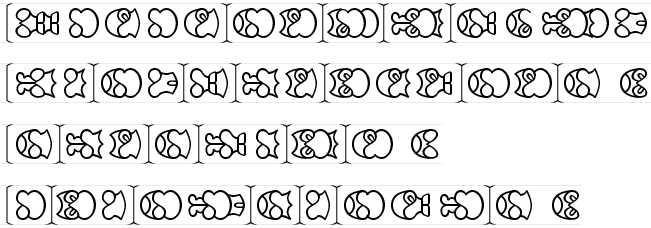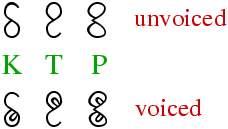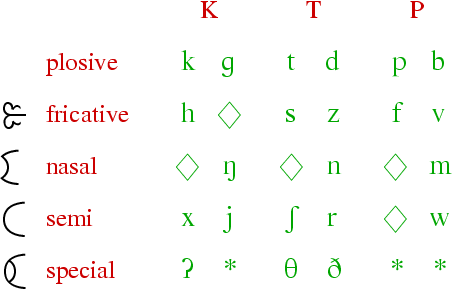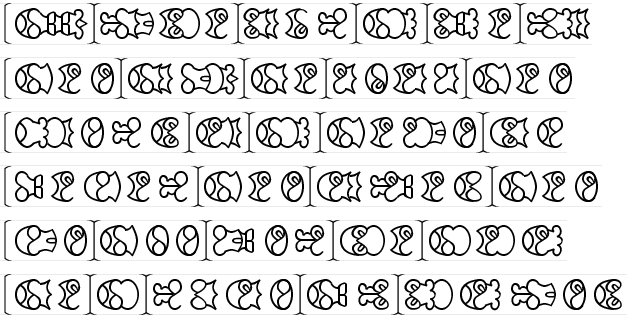The Maui script is a kind of syllabary, where syllables are assembled phonetically from parts, and made to form distinct, singular forms. There is also a sense of the third dimension in the syllabic shapes, and they look a little like carved beads.
1 Introduction
The Maui script is named after the great god-hero of Maori mythology, who—among other things—pulled New Zealand out of the ocean on the end of his fishing line. There is a suggestion of small marine animals or plants in the shapes of the assembled syllables, as things Maui himself may have shaken off his line. There is also an aesthetic perhaps reminiscent of the Easter Island script (Rongorongo), or the more complex Mayan glyphs.
Originally, the script was to be used for the simple phonologies of Pacific languages, but, as can be seen in the charts below, many other phonemes and syllabic patterns are available. Here is a famous love song in the Maori language:
“Pookarekare ana ngaa wai o Waiapu;
whiti atu koe hine marino ana e.
E hine e hoki mai ra;
ka mate ahau i te aroha e.”
2 Analysis
Despite the initial impression of there being many unique forms, each syllable is very simply assembled from a small number of phonetic pieces.
2.1 The consonant part
Firstly, nearly all syllables have a region of consonantal onset, one of three represented by the central voluted shape:
There is a rough match here to velar, dental and labial regions respectively.
In front of this shape, a modifier is attached to specify more clearly which consonant is being used. Absence of a modifier implies a plosive.
Here, the diamond indicates lack of a useful phoneme in this particular rendition. The asterisk indicates a non-phonemic glyph, shown below. A language may arrange the modifier table differently to the way it is here, to make better use of the three-fold space. One example might use the unvoiced nasals to signify non-phonemic elements, and use the “special” modifier for other phonemes.
2.2 The vowel part
The vowel shapes simply attach to the right of the assembled consonant. Multiple vowels can attach in series; this is a common effect in Maori, for example. Also, having /l/ and approximant /r/ among the vowels means we needn’t break the syllable for these smooth sounds.
2.3 Special glyphs & combinations
Shown here are the three non-phonemic glyphs, as well as glyphs for special phonemic situations. The vowel-like phonemes /l/ and approximant /r/ may start a syllable, and are then given the modifier shown here. Other vowel-initial syllables would use the glottal plosive consonant as onset (“special unvoiced K”). For syllabic patterns other than the simple CV of Pacific languages, most modified consonants can be written without a vowel. Except for plosives, which use the closed oval forms given here (voicing marks may also be drawn on these to make solo or final /g/, /d/ and /b/).
As for word breaks, it is envisaged that each word fits on a narrow strip just long enough to hold all its syllables. For want of a better mechanism for the printing of this effect, a slim vertical is inserted between words.
3 Another Example
This is an attempt to use Maui for English.
“All human beings are born free
and equal in dignity and
rights. They are endowed with
conscience and reason, and
should act towards one another
in a spirit of brotherhood.”
(Article 1 of the Universal Declaration of Human Rights)
A version of this page can also be found on
Omniglot.







